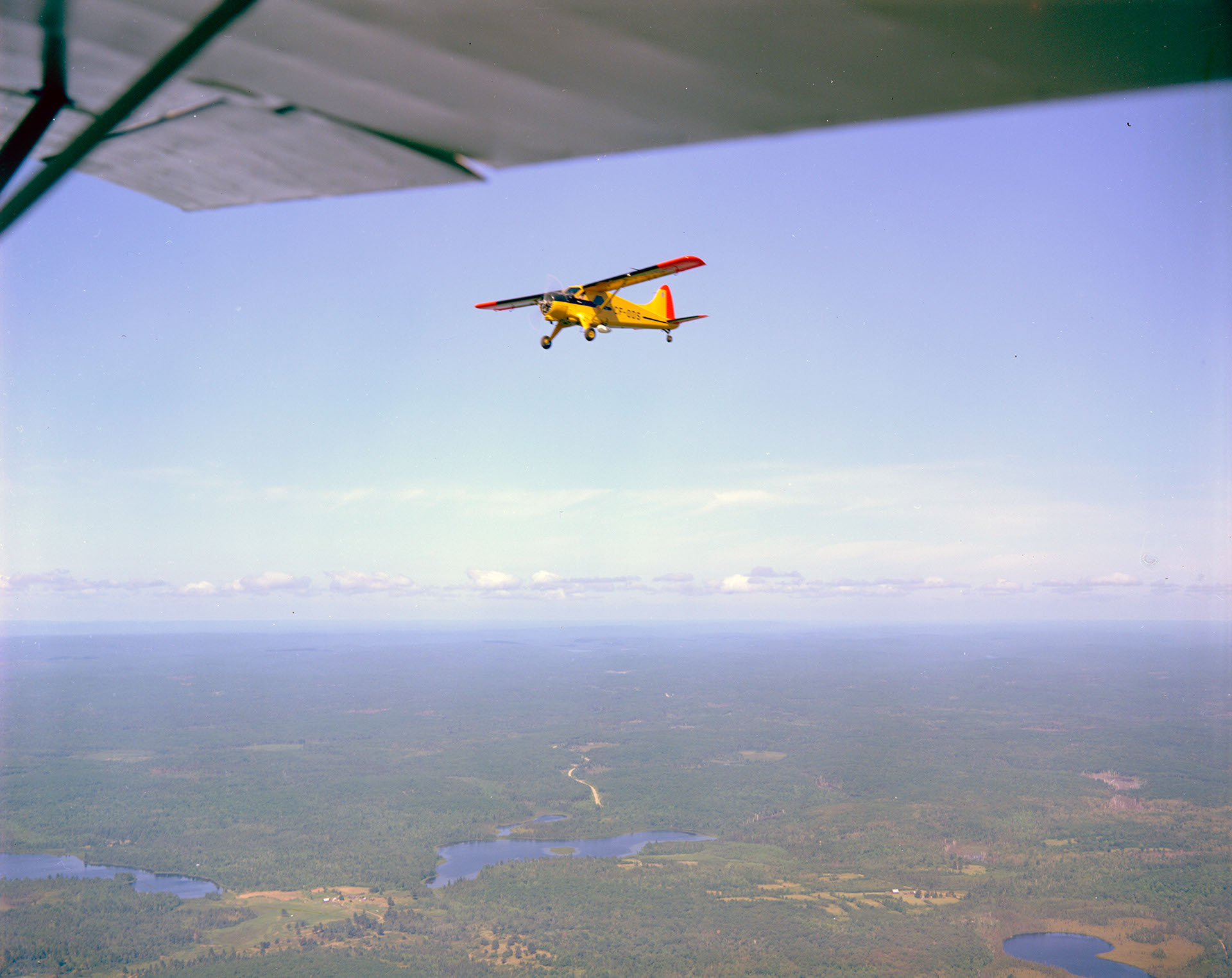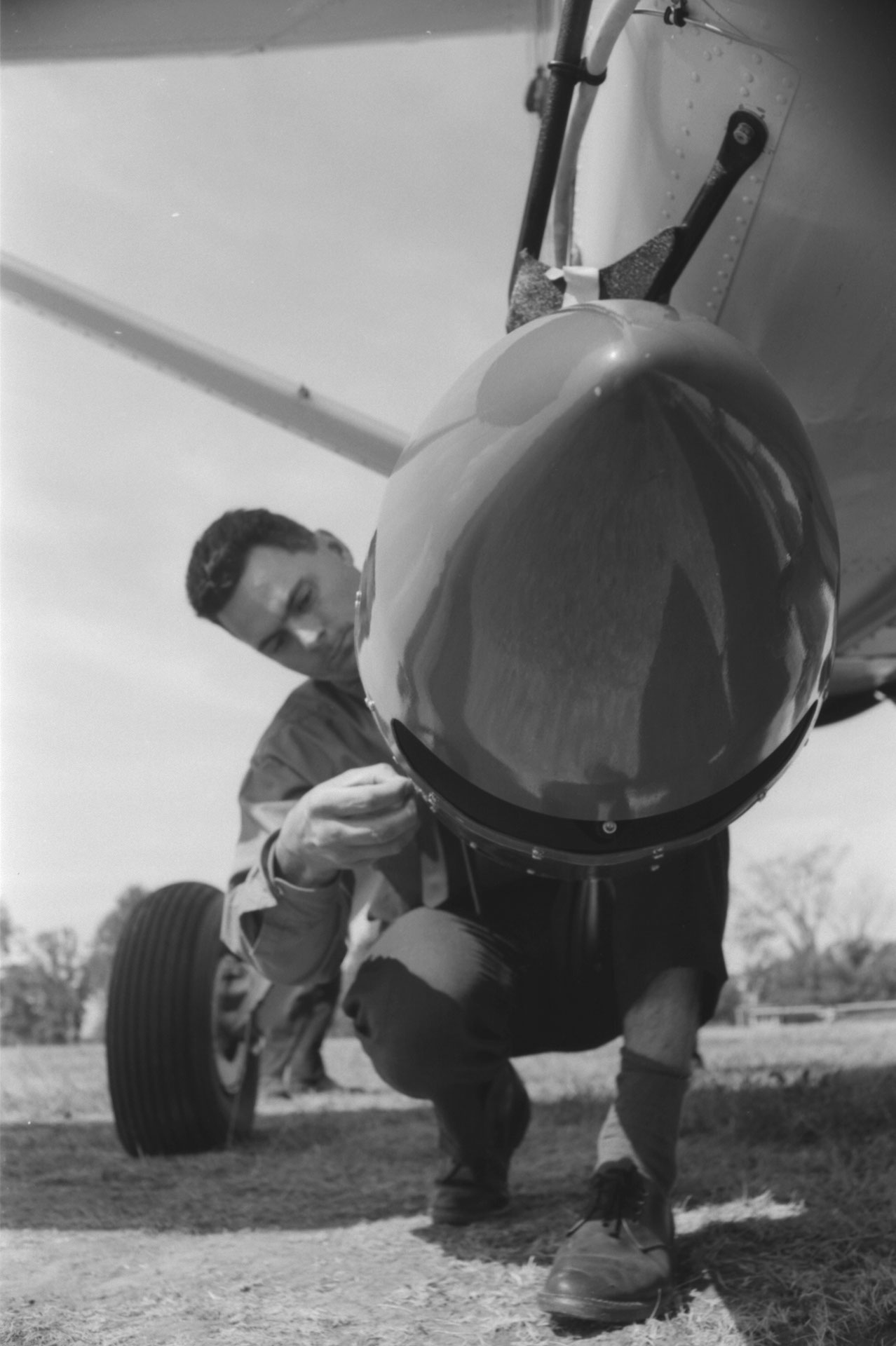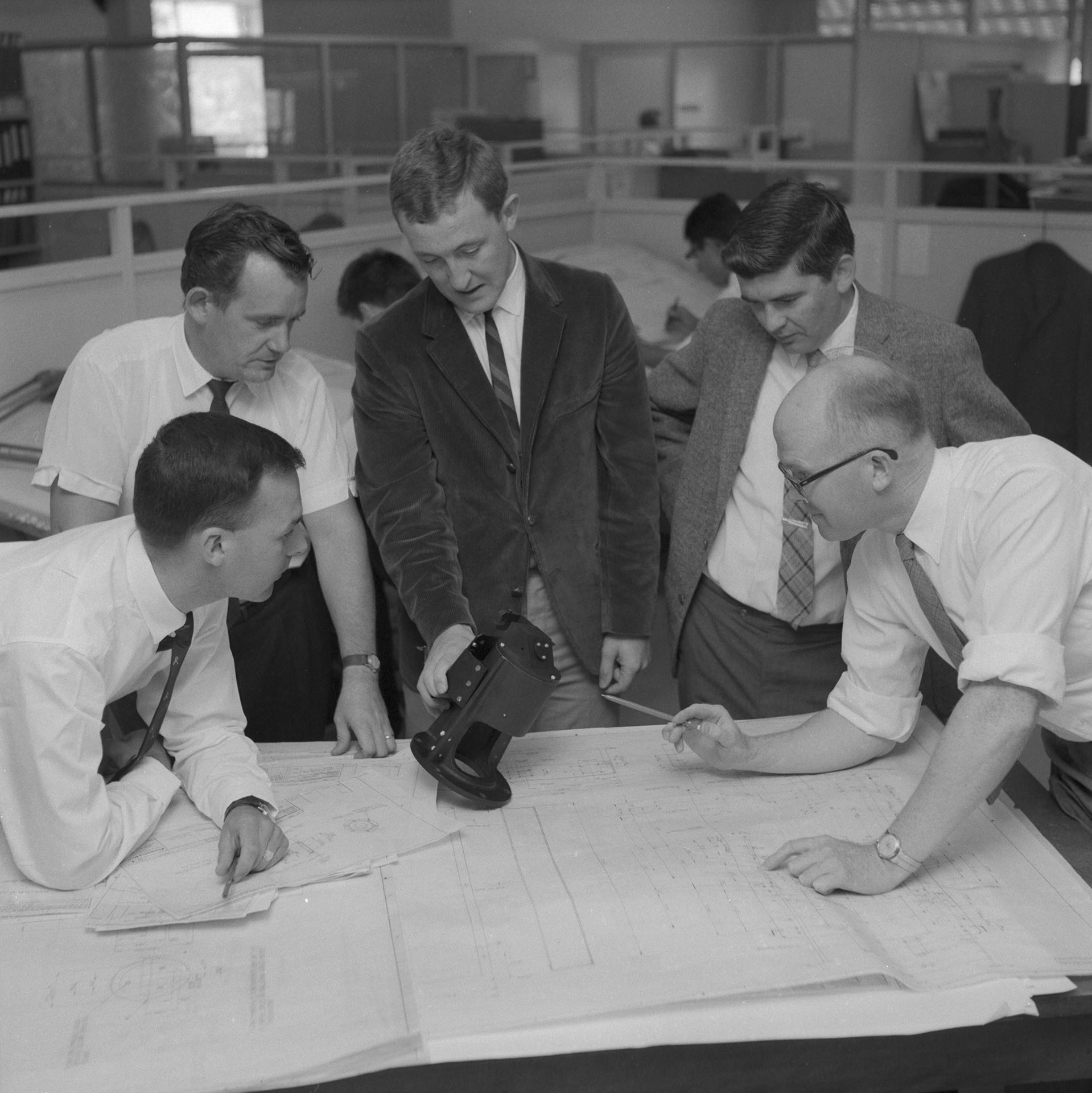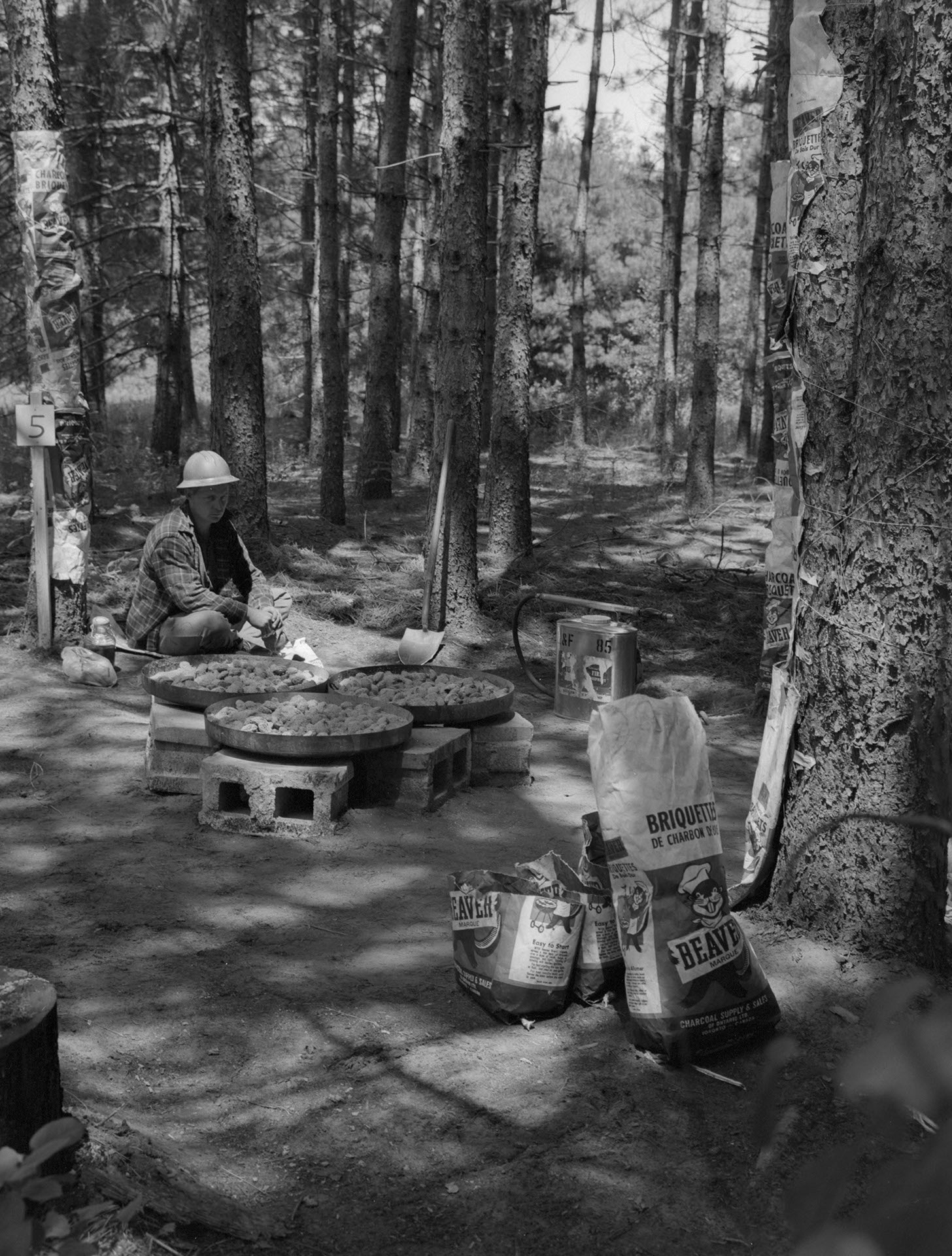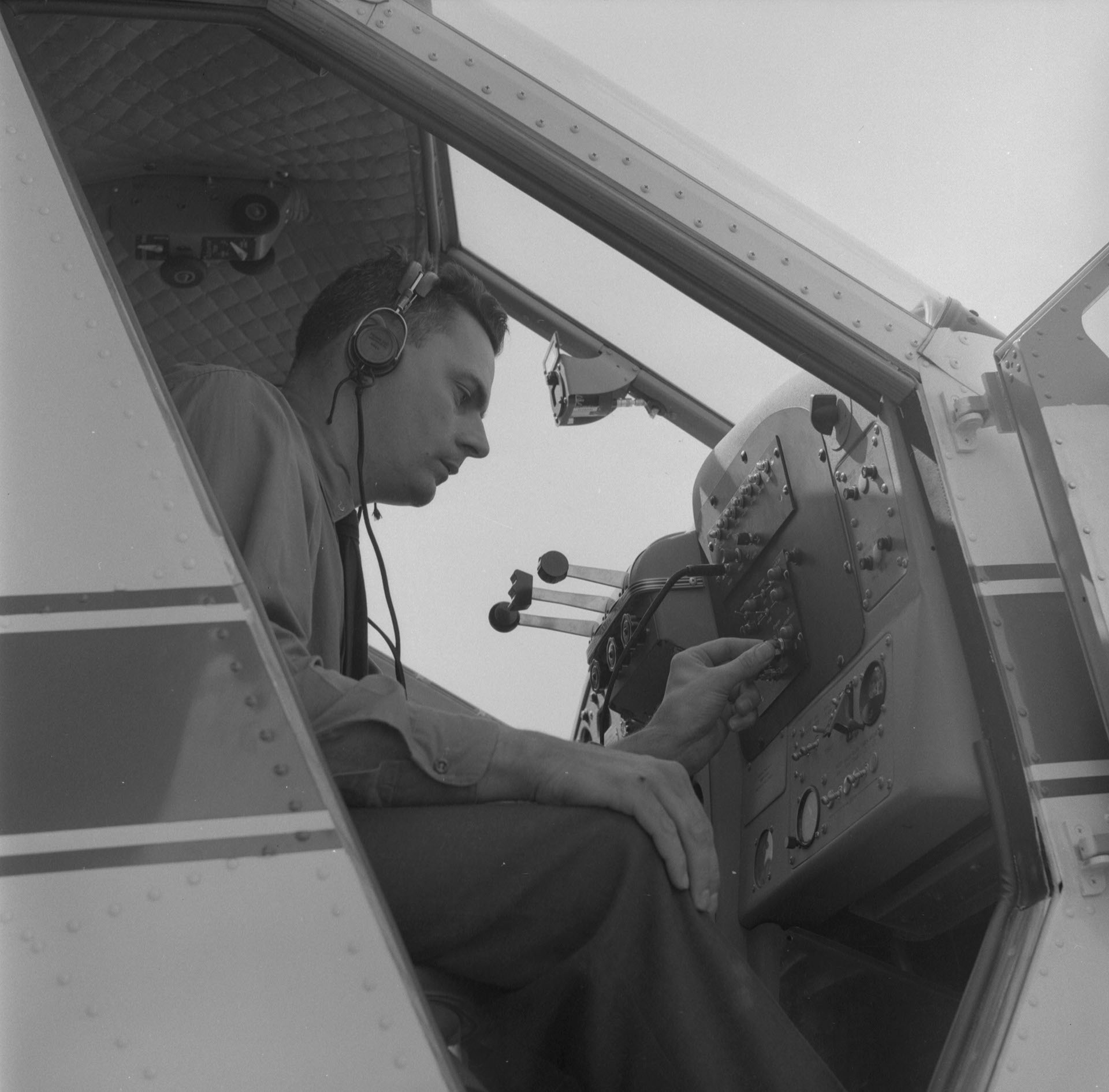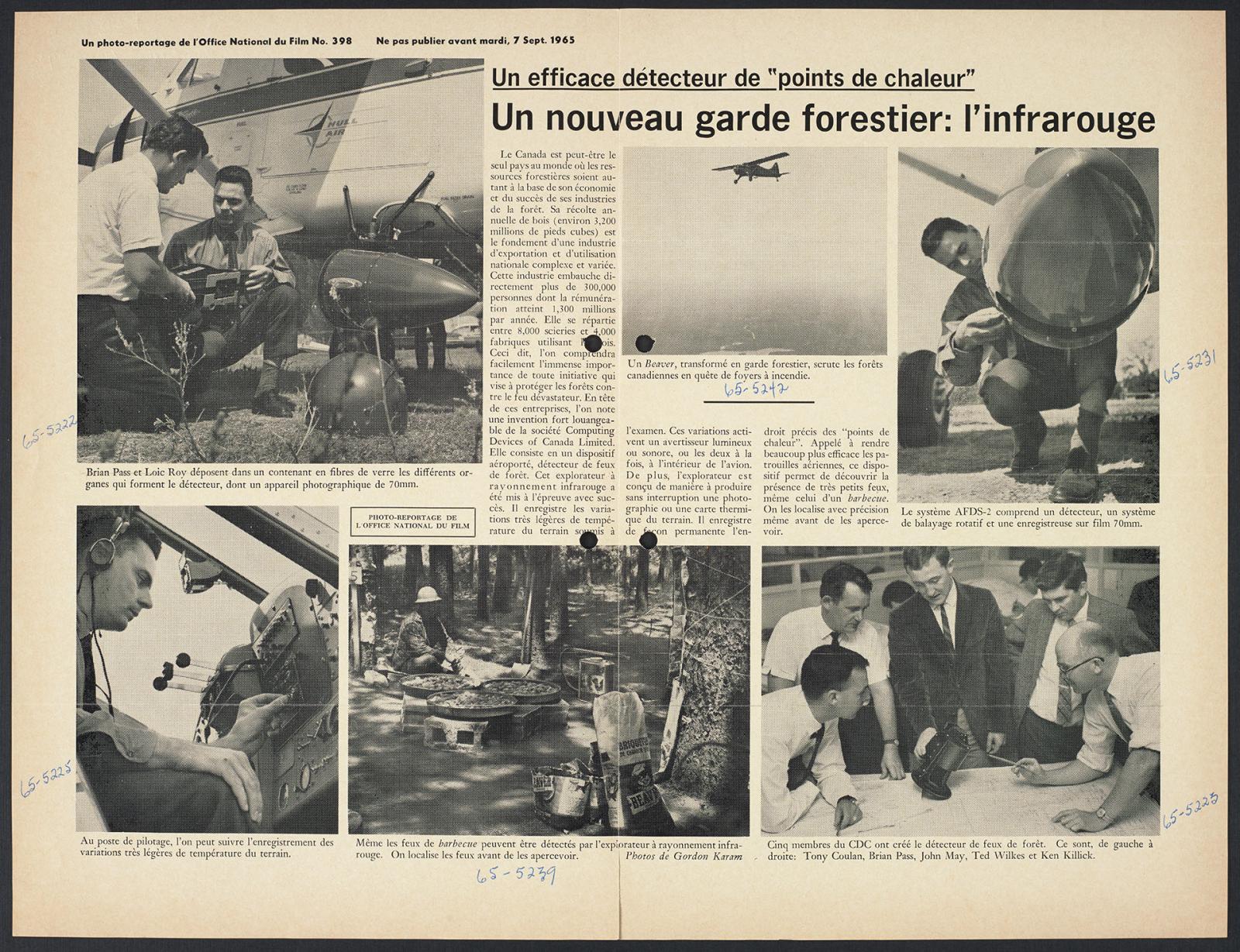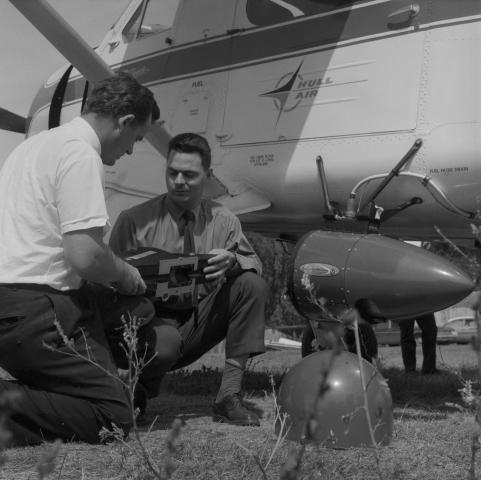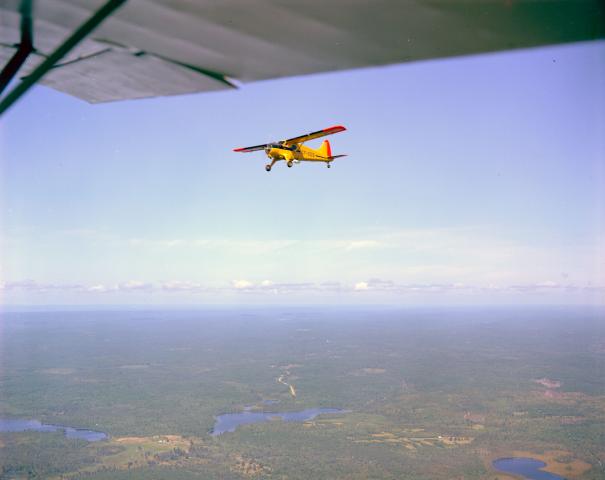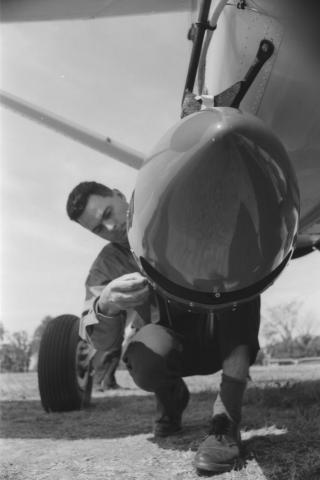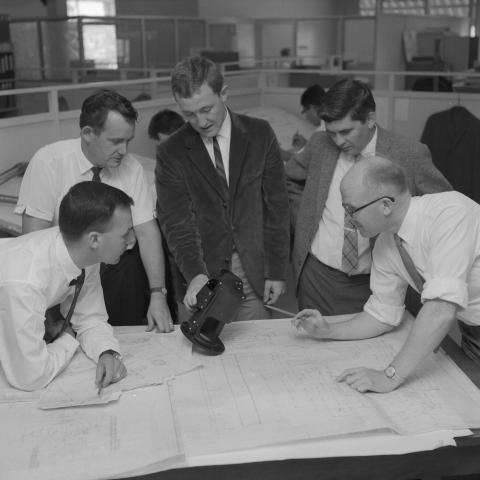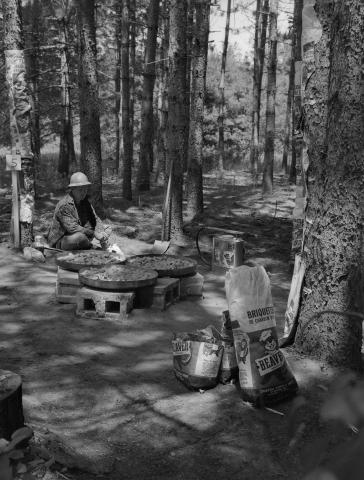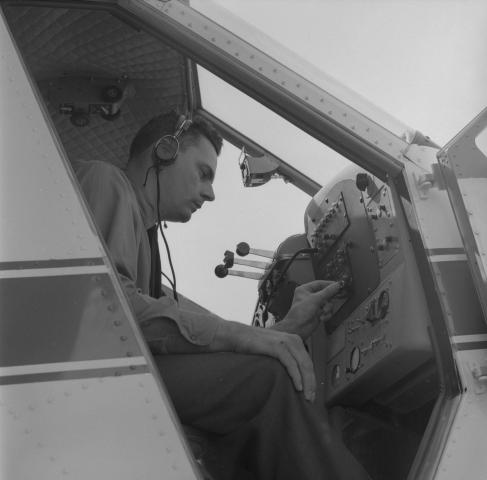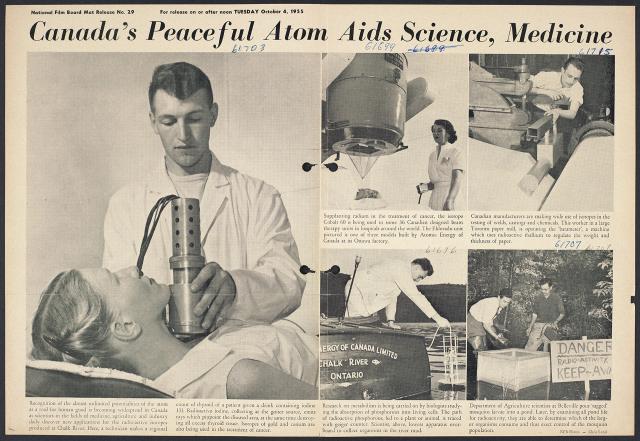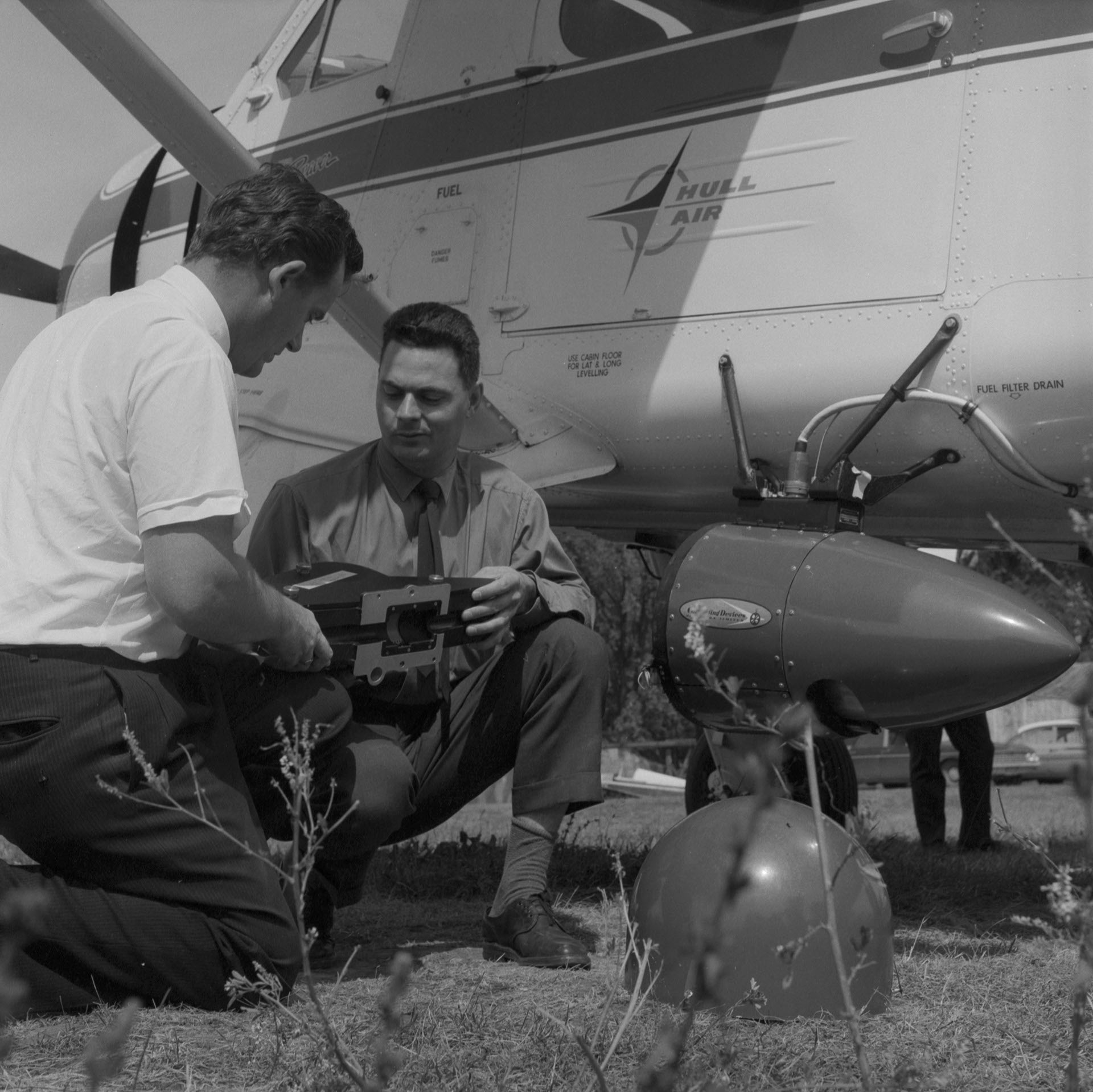
Photostory #398: Canadian Device Opens New Fields of Investigation: Infra-Red Eye Scans Earth from on High
Photographers
Maker
National Film Board of Canada
Release Date
September 7, 1965
Collection
CMCP fonds
Credit Line
Canadian Museum of Contemporary Photography fonds, National Gallery of Canada Library and Archives
Main Text
Typical of commercial products stemming from Canada's growing research and development programs is a brand-new airborne infra-red scanning device. Aimed at pinpointing forest fires when they are still no bigger than a backyard barbecue stand this specially-designed detector also opens up new fields of economic research in the study of many hard-to-measure aspects of oceanography, geology and agriculture. Combining a small weight factor with simplicity of operation, the scanner can be carried in the lightest aircraft and used unaided by the pilot. Basic idea behind the devise is the continuous recording of the infra-red radiation of the terrain flown over. This type of radiation, closely related to the temperature of the material from which it comes, means such recordings can distinguish between the hot surface of roads and highways and the coolness of leafy woodlands, between the cold waters of lakes and the sun-warmed sands of surrounding beaches - by night or day, through smoke or haze. The new scanner, designed and developed by Computing Devices of Canada in Ottawa, is at present primarily adjusted to give clear warning of impending forest fires. If the aircraft passes over a burning area of no more than three feet in diameter a warning beep-beep sounds in the pilot's headphones and one of seven lights on the small control panel indicates the direction of the heat source. At once the pilot can find the exact spot by circling the area and then give the necessary warning. Later, examination of the continuous infra-red recording on photographic film will pin-point the fire as if on a map. The new scanner will provide conservationists, agriculturalists and scientists with a totally different range of vision on another wavelength, will give Canada a leading position in the commercial use of a vital tool.
Subjects:

